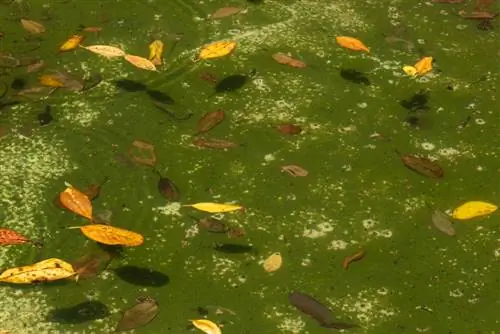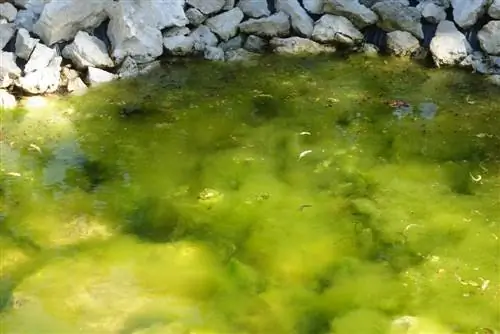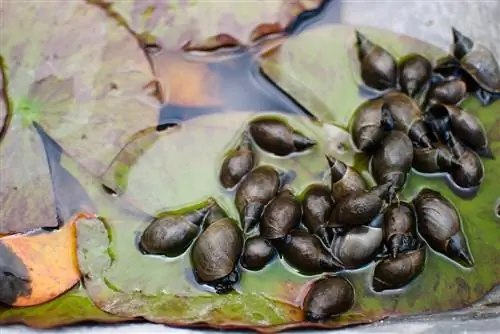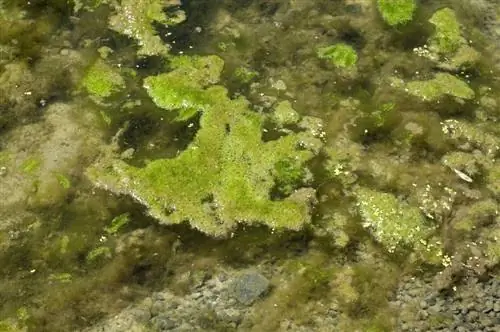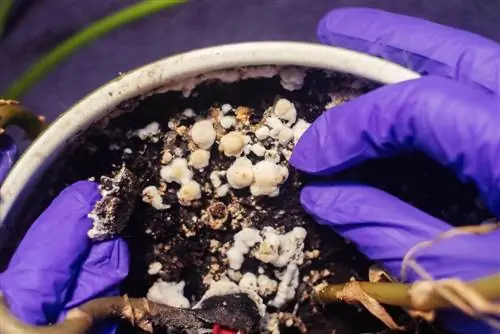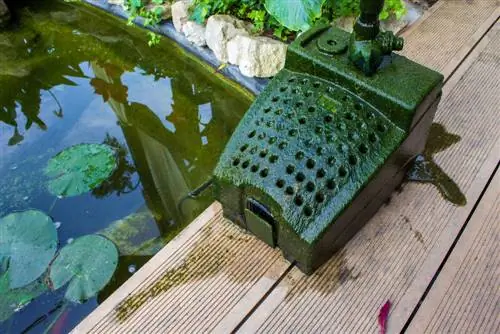- Author admin [email protected].
- Public 2023-12-16 16:46.
- Last modified 2025-01-23 11:19.
Thread algae are the most feared type of algae for garden pond owners. The thready, fluffy structures not only disturb the visual appearance of the pond, but can also pose a serious danger to pond inhabitants. So arm yourself with the necessary knowledge about the pests.
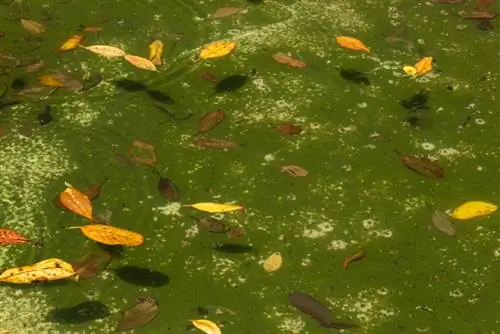
How to remove thread algae in the pond?
To combat thread algae in the pond, you should preventively reduce the nutrient content, remove leaves and plant pond plants. You can fish out filamentous algae acutely and use algae killers or UVC lamps in an emergency.
How to recognize filamentous algae
Algae are present in every garden pond. The most common, however, are blue and green algae, which are difficult to detect because of their microscopically small plant bodies. They also pose a relatively low risk to water quality.
The filamentous algae, botanically Zygnema, are significantly more problematic. This is an entire genus within the green algae. That's why they can visit your pond in different forms. For example as:
- Long, branchy, green threads
- Fur-like, cottony coating on the water surface
- Tufts that also grow over stones
The problem with filamentous algae is that they grow at low water temperatures of 5°C and can spread very quickly. This increases the risk of rapid water clouding. If you don't act in time, algae blooms can quickly occur and the pond is in danger of tipping over. The rapidly developed algae mass then soon dies due to the depletion of nutrients and sinks to the bottom.
The algae remains use up a lot of oxygen, which can cost the lives of fish, insect larvae and amphibians. The sunken algae then release nutrients into the soil and water at the bottom of the pond, which can lead to new algae growth.
What to do about thread algae?
Preventive measures
There are a few things you can do in advance to prevent things from getting that far. Basically, the best preventive measure is not to allow the nutrient content in the pond water to become too high. You can do this by:
- Fish fallen leaves regularly from the water surface
- Plant lots of pond plants to utilize nutrients - they deprive the filamentous algae of the basis for settlement
- Do not overfeed any fish stock - excess fish food unnecessarily increases the phosphate and nitrogen content in the water!
- Interrupt possible flood paths from (fertilized) flower beds into the pond water
- Putting algae-eating fish in the pond: silver or grass carp, for example, are willing string algae destroyers
Acute help
If it is already too late and thread algae have settled in the pond, preventive measures will no longer help. Urgent action must be taken now, because as I said: thread algae grow extremely quickly and will soon take over the entire pond.
First of all, it makes sense to fish out the thread algae, which are quite visible and somewhat connected, with the fish net (€10.00 on Amazon). If you detect the infestation early, you may be able to get ahead of the curve and slow down the spread.
If the infestation is already advanced, algae killer may be necessary. However, if possible, they should only be used in emergencies and do not have a lasting effect. Algae killers cause the algae to clump together, making it easier to remove from the water by a filter pump system. UVC lamps also have the same effect.

